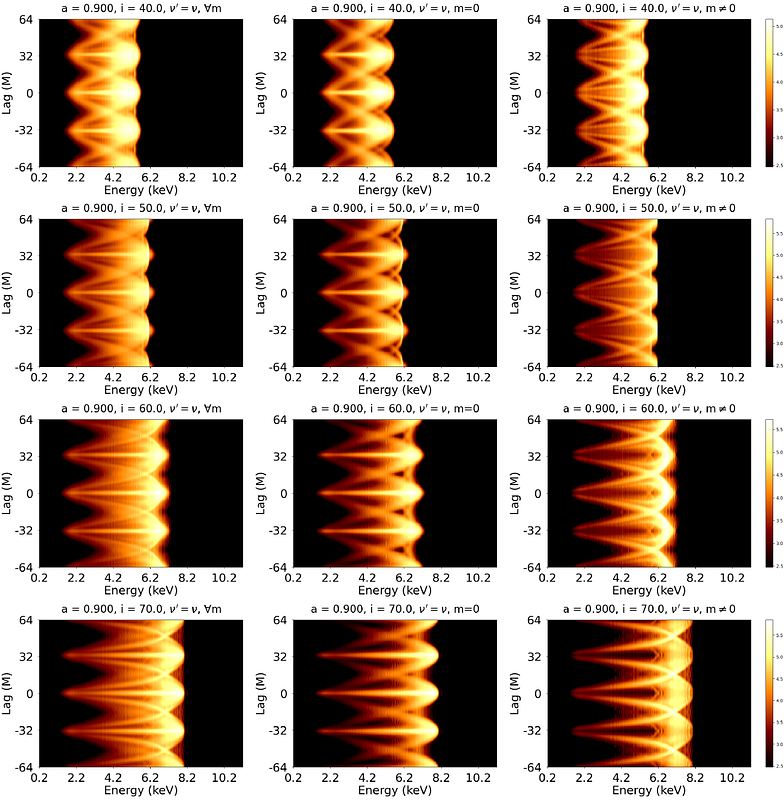Exploring lensing signatures through spectrotemporal correlations: implications for black hole parameter estimation

Exploring lensing signatures through spectrotemporal correlations: implications for black hole parameter estimation
Sreehari Harikesh, Shahar Hadar, Doron Chelouche
AbstractExtreme gravitational lensing and relativistic frequency shifts, combined together, imply that radiation emitted from a black hole's vicinity can echo at different frequencies and times, leading to spectrotemporal correlations in observed signals. If such correlations are uncovered by future observations, they could provide a probe of the spacetime geometry in the strong-field region near black holes. Here, motivated by these prospects, we numerically compute the two-point correlation function of specific flux fluctuations in a simple model of line emission by a hotspot in an equatorial circular orbit. We make use of the Adaptive Analytical Ray Tracing (AART) code to generate the light curves we then correlate. Our results for the correlation maps show a clear decomposition into direct emission-dominated, and lensing-dominated contributions. The computation transcends past analytical approximations, studying the main contribution to the correlation function, which is not deep in the universal regime. We compute correlation maps for many combinations of black hole mass, spin, inclination, hotspot width, and orbital radius, and study their dependence on these parameters. The correlation maps are then used to train convolutional neural networks which can be used to estimate source parameters, achieving promisingly low evaluation errors within the model. Our results could be relevant for future X-ray spectroscopic missions, offering insights into black hole parameter inference.